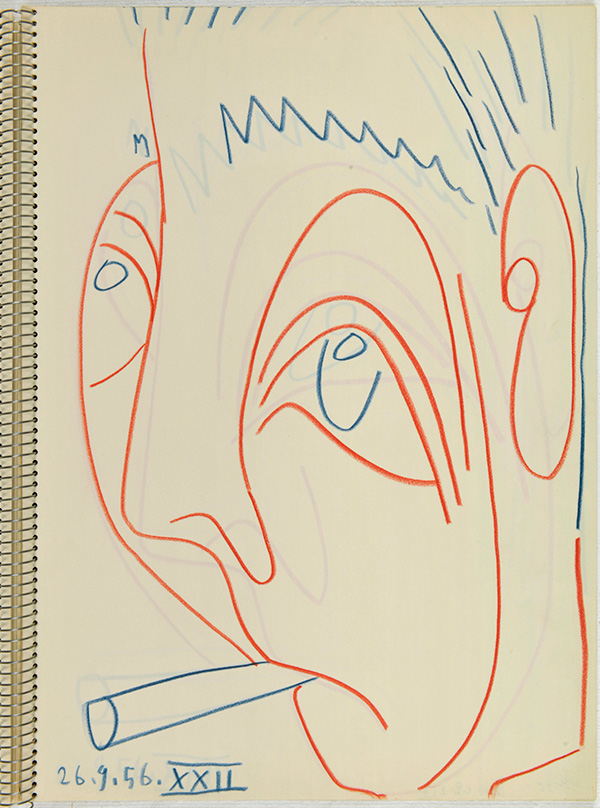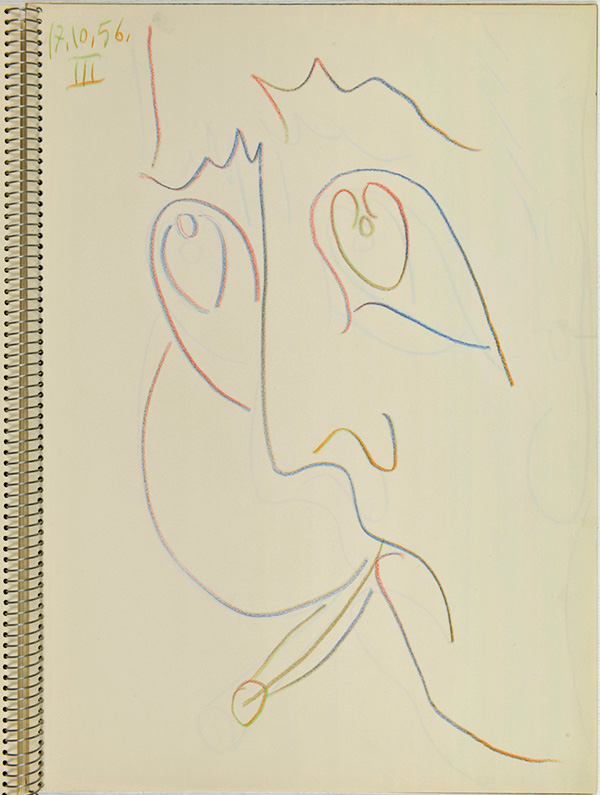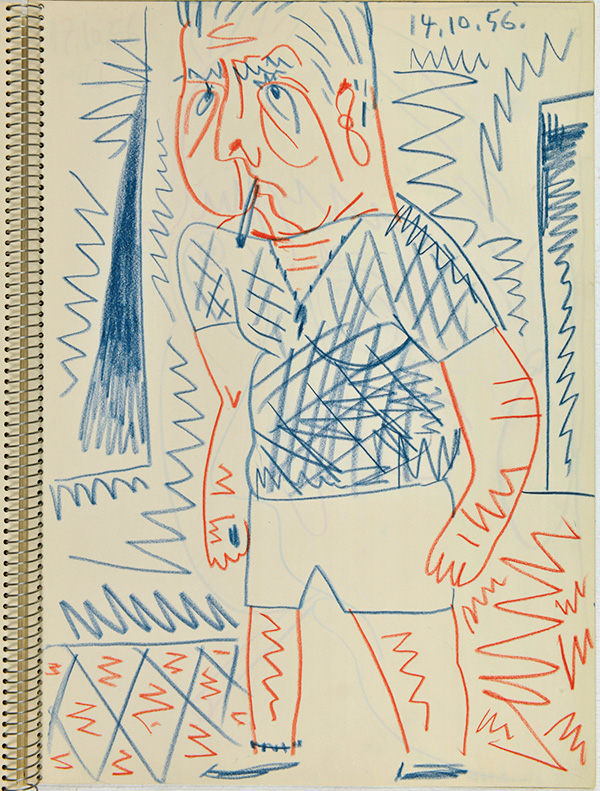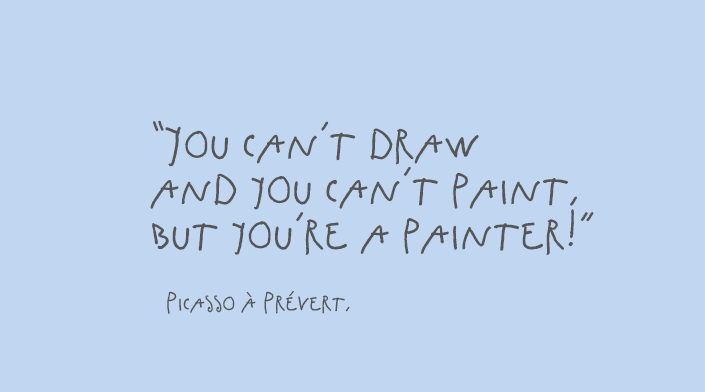Images like a text, the collaborations of Picasso and Prévert
“The word image means what it means, what we make it say, what people call a metaphor: it’s sort of a strange word, a bit learned, like a rhetorical figure or face; all those things have names. But just as you can write in ink or pencil, you can also make images –especially someone like me, who can't draw. You can make images with scissors and glue, and it’s just like a text, it says the same thing.” (Jacques Prévert)[1]
And Picasso said to the poet, “You can’t draw and you can’t paint, but you’re a painter!”[2]
Jacques Prévert, who had written extensively for the artists of his times (from Vasarely and Klee to Miró, and many others who have since been forgotten), played a significant role in Picasso’s collaborations with numerous artists.
Their first joint creative effort was Roland Petit’s ballet Le Rendez-vous, based on a text by Jacques Prévert and with music by Joseph Kosma, for the Ballets des Champs Élysées. The sets were designed by Brassaï and the theater curtain by Picasso (premiered on June 15, 1945). The ballet evokes the Bohemian Paris of the postwar period. A young man tries to escape the dark fate foretold in a horoscope. He fails when he crosses paths with “the most beautiful girl in the world.” The stage curtain replicated Bougeoir et masque, an oil on canvas that Picasso had painted in 1943. Brassaï’s sets were enlarged photographs of Parisian scenes, such as the ball at Passage Thiéré in the 11th arrondissement, stairs and a street lamp in Montmartre, and the façade of La Belle Étoile hotel in the Latin Quarter. Brassaï described these searches in Conversations avec Picasso. The photographer completed the sets with a third photograph which he did not mention in his Conversations avec Picasso, showing a pillar in a metro station.
Drawing from the ballet’s central theme, the poet wrote a song, Les enfants qui s'aiment, which was handed down to posterity after appearing in a film by Marcel Carné: “The children who love one another kiss standing up / Against the doors of the night / And the passers-by point their fingers at them / But the children who love one another / Are off in their own world […]”
Prévert, ever the enthusiast, engaged in imaginative collaborations with Picasso: “And off he goes, always in wonder, towards other discoveries, always the same, the discovery of the world, the discovery of beauty, old as the world itself, young as light.”[3] The young André Villers (1930-2016), for example, met the artist in March 1953. Their artistic collaboration was an adventure experimenting with photography and cutouts. Those ten years of unique creative collaboration led to the publication of Diurnes in 1962, gathering close to thirty images and published by Galerie Berggruen, with a foreword by Jacques Prévert. He was the one to come up with the title: “We’ll call it diurnes. We’ve had just about enough nocturnes!”
Three years earlier, Jacques Prévert had published his Portraits de Picasso, in which his texts were accompanied with photographs of Picasso taken by André Villers.[4] Picasso “occupied” one of the copies of the book for his friend, the author. Picasso’s inscriptions throughout an entire book are rare, but always stem from spontaneity, the freedom to write, to draw, to paint, or to scribble. In it, the artist shares a sincere intimacy with Prévert, offering the poet his boundless inventiveness, his humor, and his self-mockery. Creatures and caricatures run alongside deceptively simple forms and bright, joyful hues unfolding across the pages, as in a friendly nod, a sacred union. These lively pages are a reminder of the painter’s interest in words and books, which he illustrates, like everything else, true to his form: profusely and giving the impression of a deliberately clumsy improvisation.[5] Jacques Prévert owned other books with inscriptions from his friend, such as Toros y toreros, by Luís Miguel Dominguín, again with colorful grease pencil marks, but in this case, about one of the painter’s favorite subjects: bullfighting.[6]
[1] Quoted by André Pozner in Jacques Prévert Collages, Éditions Gallimard, 1982.
[2] Quoted by André Pozner, op. cit.
[3] Jacques Prévert, Portraits de Picasso, 1959, new edition by Éditions Ramsay in 1981.
[4] Jacques Prévert, op.cit.
[5] Jacques Prévert, Portraits de Picasso, 1959. Picasso illustrated certain pages with coloured grease pencils.
[6] Luis Miguel Dominguin, Toros y toreros, Éditions du Cercle d’Art, 1961. Prévert had a copy of the book inscribed and illustrated by Picasso on April 18, 1963.








 Summary
Summary